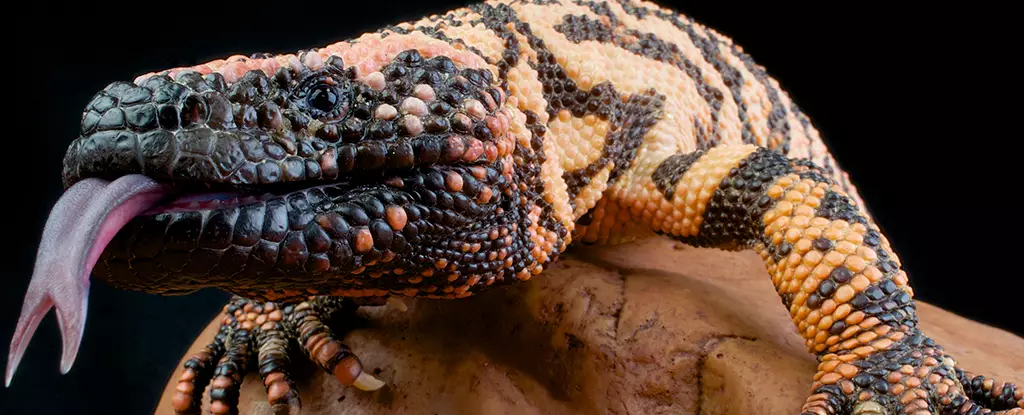The intricate connection between the natural world and human health often yields extraordinary outcomes. The exploration of animal venoms has revealed a treasure trove of medicinal potential that stretches far beyond what traditional medicine might suggest. Far from merely being a curious phenomenon, the application of animal toxins illustrates how some of nature’s most dangerous creatures have inadvertently provided solutions for human maladies, culminating in significant advancements in drug development and therapeutic techniques.
Among the remarkable contributions of animal venom to medicine, the discovery of glucagon-like peptide-1 (GLP-1) agonists stands out prominently. Research led by endocrinologist Daniel Drucker in the late 20th century, sparked by earlier studies involving the venom of the Gila monster, resulted in a groundbreaking therapeutic agent for type 2 diabetes. Drucker’s team was on a quest for a molecule that would not only mimic human GLP-1 but also persist in the bloodstream longer than its natural counterpart, which is quickly degraded.
By dissecting the venom of the Gila monster, scientists identified Exendin-4, a protein exhibiting similar properties to GLP-1. This pivotal finding laid the foundation for synthetic versions of GLP-1 agonists like Ozempic and Wegovy, which help regulate blood sugar and suppress appetite, significantly impacting obesity treatment. While the journey from the venomous bite of a lizard to a life-saving medication was arduous, it underscores the versatile applicability of animal toxin research in combating metabolic disorders.
Interestingly, the medicinal potential of venoms extends to cardiovascular health as well. Lisinopril, a widely prescribed drug for hypertension and heart failure, traces its roots back to the Brazilian viper. The venom of this snake is teeming with enzyme inhibitors that facilitate the diffusion of toxins throughout its prey, a property that researchers have ingeniously harnessed to develop effective cardiovascular medication. By blocking specific enzymes, Lisinopril provides crucial assistance in managing blood flow, making it a staple in medical care for patients at risk of heart complications.
This intersection between toxicology and therapeutic science reflects a broader narrative about the essential roles that seemingly harmful biochemicals can play in enhancing human life. As research continues to delve deeper into the properties of animal venoms, the horizon for future discoveries remains promising—particularly concerning conditions that have long challenged medical science.
Yet, the ocean is not to be outdone in the realm of medicinal breakthroughs. The Caribbean sponge, Tectitethya crypta, has supplied inspiration for the development of chemotherapy drugs. This marine organism has evolved unique nucleosides that protect it from invading DNA, showcasing nature’s ingenuity in species survival and resilience. The chemotherapeutic agent cytarabine, derived from these nucleosides, exemplifies how ancient species can contribute to contemporary medical therapies, offering hope for patients suffering from leukemia and non-Hodgkin’s lymphoma.
This oceanic bounty poses an intriguing question about the limits of our understanding: how many more potential medicines lie undiscovered in the depths of our oceans? As we face global challenges in cancer treatment, turning our attention to marine biology for answers may yield untold benefits.
Furthermore, the application of animal toxins finds its way into groundbreaking surgical techniques, particularly in oncology. Oncologist Jim Olson’s innovative work with chlorotoxin from the venom of the deathstalker scorpion marks a significant turning point in tumor detection. His team successfully engineered a visible “paint” that illuminates cancerous cells during surgeries, allowing for more precise removal of tumors. This delicate balance of leveraging nature’s deadliest components for life-saving technology is a testament to the relentless human pursuit of knowledge and innovation.
The implications of such research extend well beyond improved surgical outcomes; they highlight the potential for more holistic approaches to medicine that embrace nature’s complexity. Each of these stories reminds us that even the most toxic elements can bear unexpected gifts, provided we are willing to seek alternatives and embrace the potential they hold.
As we continue to explore the myriad applications of animal venoms in medicine, an essential conversation emerges regarding conservation and habitat preservation. The potential for future medical advancements hinges on the survival of many of these species and their ecosystems. Protecting biodiversity is not just an ecological imperative; it is a crucial aspect of sustaining the medical advances derived from nature.
Ultimately, these compelling narratives serve as reminders of the interconnectedness of life on Earth. Nature’s pharmacy offers life-saving tools that illustrate the potential of unexpected friendships between humans and the natural world. Through unwavering curiosity and respect for all living organisms, there is hope for continued discoveries that will further improve human health and wellbeing.


Leave a Reply